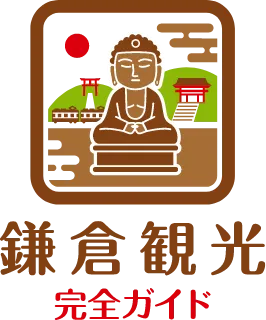Autumn Leaves at Goryo Shrine (御霊神社)
Discover the Autumn Leaves at Goryo Shrine (御霊神社)
Nestled in the quiet Sakanoshita area of Kamakura, Goryo Shrine (御霊神社) is a venerable Shinto shrine dedicated to Kamakura Gongoro Kagemasa (鎌倉権五郎景正), a brave samurai of the late Heian period. Locals affectionately call him “Gongoro-sama,” and the shrine remains a spiritual guardian of the region.
Although just a short walk from Hase-dera Temple (長谷寺) and the Great Buddha (鎌倉大仏), Goryo Shrine offers a peaceful retreat from the crowds. In autumn, the highlight is the magnificent “Meoto Ichō” — a pair of ancient ginkgo trees that turn a stunning golden hue, standing out brightly against the tranquil backdrop of Kamakura’s fall scenery.
When Is the Best Time to Visit?
The leaves begin to change from late November, often reaching their golden peak between early to mid-December, though timing can vary with the weather. The Meoto Ichō trees, male and female ginkgoes standing side by side, gradually shift into a glowing yellow as morning sunlight filters through the leaves.
Visiting in the quiet season between late autumn and early winter means fewer tourists and a more contemplative experience. As the leaves start to fall, the shrine grounds become carpeted in gold — a serene and breathtaking sight.
Photo Highlights and Must-See Spots
The Meoto Ichō is said to be over 400 years old. The way the two trees grow closely together evokes the enduring bond of a couple who have weathered time side by side. Their twisted trunks and bold branches radiate quiet strength and beauty.
Nearby, a 350-year-old camphor tree, designated as a natural monument by Kamakura City, adds a contrasting shade of green. Together with the ginkgoes, these trees create a multi-layered palette that perfectly embodies Kamakura’s understated autumn charm.
Since May 2021, photography inside the shrine grounds has been prohibited to preserve its sacred atmosphere. A sign at the torii gate reminds visitors: “This is sacred ground – No photography.” Instead of capturing it on camera, simply be present and take in the brilliance of the golden leaves with your own eyes — a deeply personal and luxurious experience.
Embrace the Quiet Hours of Morning
Early morning or dusk is the ideal time to visit Goryo Shrine. When the air is crisp and few people are around, the gentle sounds of falling leaves and rustling branches become more noticeable, allowing you to feel the passage of time in a deeply calming way.
If you’re staying at Tosh’s Place (トシズプレイス), a morning stroll to the shrine is highly recommended. It’s just a short walk away, offering a serene, local-style experience without the need to rush. Savor the fresh autumn air as you walk through the grounds — a simple yet enriching start to your day.
How to Get There from Tosh’s Place (トシズプレイス)
Located within easy walking distance from the heart of the Hase area, Goryo Shrine is also close to Tosh’s Place. The route includes quiet lanes lined with traditional homes and the scent of sea breeze — a leisurely journey that becomes part of your Kamakura experience.
The iconic Enoden train runs directly in front of the shrine’s torii gate. While the passing trains are a photogenic sight, please remain safe and respectful by not stopping or leaning near the crossing. Once inside the grounds, let the quiet sacredness guide your steps.
Wrap-Up: Autumn Leaves and a Local Way to Experience Kamakura
The fall colors at Goryo Shrine teach us the beauty of silence and stillness. From the golden canopy of the Meoto Ichō to the whisper of leaves beneath your feet, this sacred space captures the quiet heart of Kamakura’s autumn.
By staying at Tosh’s Place, you can step into the rhythm of local life — not just visiting Kamakura, but living its seasons. This autumn, walk to Goryo Shrine, breathe in the harmony of nature and prayer, and discover the essence of fall in this historic town.
Toshi’s Evaluation (2025)
| Evaluation Item | Score | Reason |
|---|---|---|
| Scenery | 9 | The view of the giant pair of ginkgo trees in the shrine brightly turning golden and the collaboration with the Enoden train running before the torii creates a unique Kamakura feeling, though the scale of maples is somewhat limited. |
| Accessibility | 10 | Very convenient location, only a 5-minute walk from Enoden “Hase Station”, and public transport access and signs are easy to understand. |
| Historical Value | 9 | Founded in the Heian period, with significant cultural value such as the Menkake Parade as an intangible cultural asset, and deep connections to Kamakura samurai, though name recognition is slightly less than Tsurugaoka Hachimangu. |
| Comfort | 7 | The precincts are relatively compact, so comfort is somewhat lacking during crowded periods, but generally the atmosphere is calm and the site is easy to visit. |
| Reviews | 8 | Google and travel site average ratings are around 4.5, very positive overall and popular as a photo spot, though there are some comments about crowds and facilities being small. |
Total Score: 43 points
The autumn leaves at Kamakura Goryo Shrine feature a spectacular combination of golden ginkgo trees and the Enoden train, with outstanding accessibility and historical value—though visitors should note the compact grounds and potential crowding.
